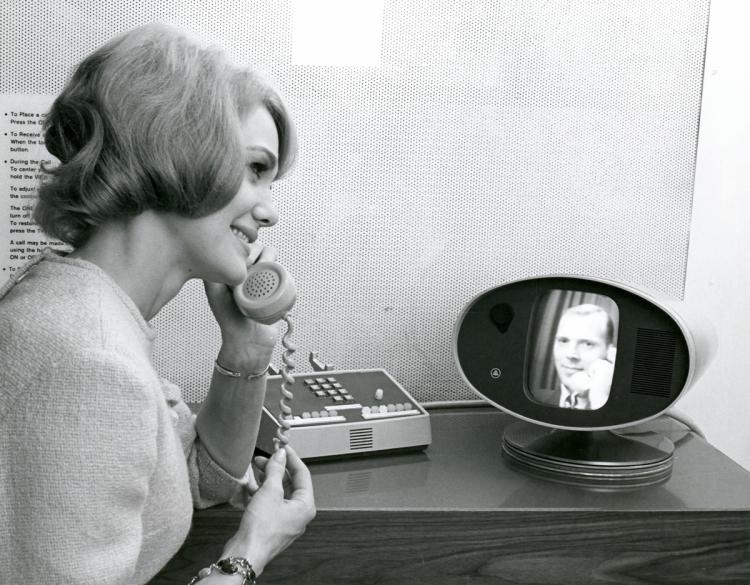"From a booth set up in Grand Central Terminal, a person could talk to a friend in Chicago or Washington while also seeing them on a small video screen. The friend would also have to go to a special booth in those cities to take the call. The price for the novelty of a three-minute call was $16. That would be equivalent to $121 in today’s money."
This excerpt comes from the New York Times piece How the Future Looked in 1964: The Picturephone.
It would seem that long before we were making Slack video calls, Bell Telephone’s Picturephone was making the same promise of transcontinental video calls to friends and family, but for a heftier price. The boxy screen and handset, known as "Mod I," went on display at the 1964 World’s Fair, where it mixed and mingled with jet packs, time capsules, and a Dupont musical presentation of "The Wonderful World of Chemistry."
While New York's Grand Central Terminal, Washington D.C., and Chicago were excited to see Picturephones installed in 1964, 10 years came and went and only a few hundred Picturephones were leased across the country.
The Mod II was discontinued by the late 1970s. By that time, the future wasn't looking quite as much like the Picturephone as it was touch screens and flavored Coca-Cola.
The Modern Voice Market
TeleGeography's International Voice Report notes some of the latest headlines in an industry in which the Picturephone is a distant memory:
- OTT Traffic Impact: OTT services, which deliver content directly to users via the internet, are a primary factor in the decline of the international voice market.
- Rise of Communication Apps: Smartphone-based communication apps, such as WhatsApp and Facebook Messenger, have become dominant, with approximately 6 billion monthly users as of September 2024.
- OTT vs. Carrier Traffic: Cross-border OTT traffic exceeded international carrier traffic in 2016. By 2024, OTT traffic is projected to reach 1.3 trillion minutes, significantly surpassing the projected 305 billion minutes of traditional carrier traffic.
- Shift in Communication Patterns: Traditional carrier traffic is decreasing, while OTT traffic is increasing.



